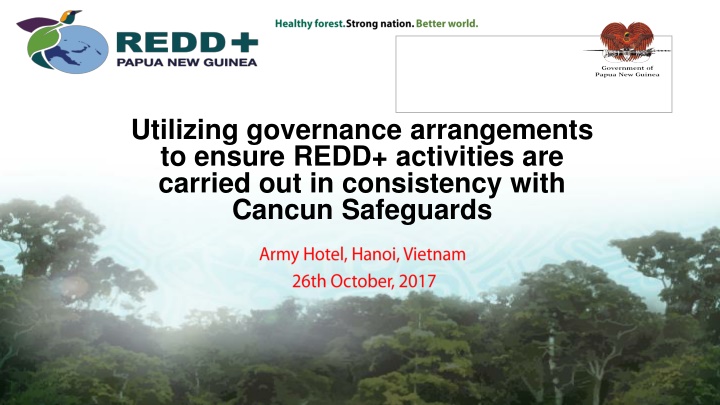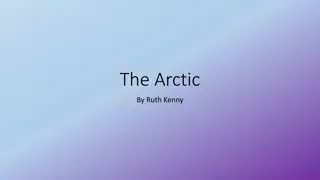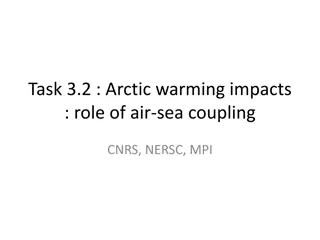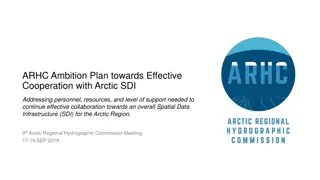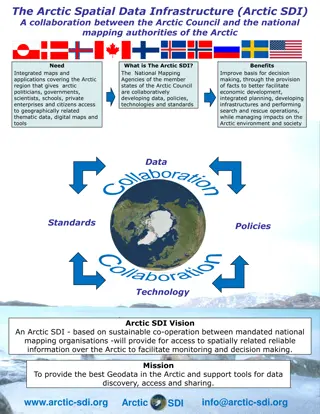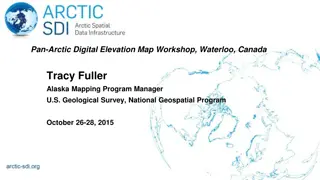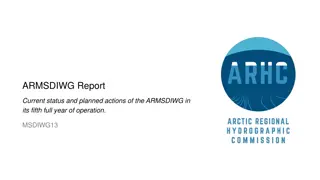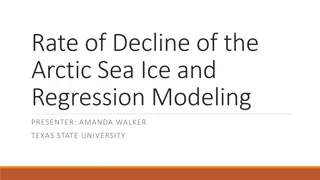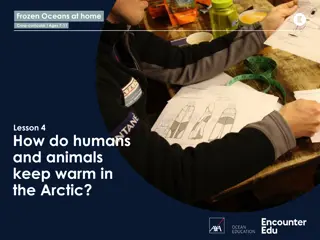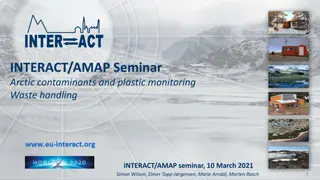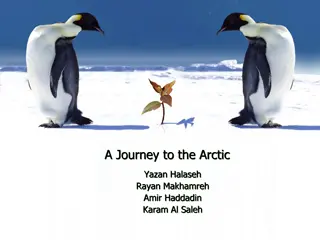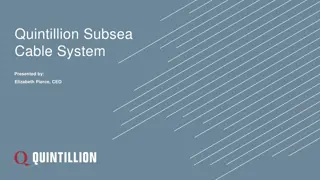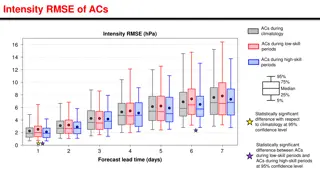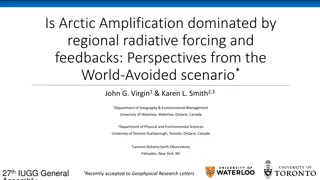China's Discourse Power in the Arctic
This content explores China's discourse power in the Arctic region, analyzing the concept of "China threat" theory, discourse power components, and cases like China's involvement in BRICS and Arctic policies. It also discusses discursive pressure on China due to ties with Russia and the USA. The presentation delves into discourse power definitions, political, institutional, moral, and technological aspects, shedding light on China's influence in international institutions and territorial disputes.
Download Presentation

Please find below an Image/Link to download the presentation.
The content on the website is provided AS IS for your information and personal use only. It may not be sold, licensed, or shared on other websites without obtaining consent from the author.If you encounter any issues during the download, it is possible that the publisher has removed the file from their server.
You are allowed to download the files provided on this website for personal or commercial use, subject to the condition that they are used lawfully. All files are the property of their respective owners.
The content on the website is provided AS IS for your information and personal use only. It may not be sold, licensed, or shared on other websites without obtaining consent from the author.
E N D
Presentation Transcript
Utilizing governance arrangements to ensure REDD+ activities are carried out in consistency with Cancun Safeguards
Developing of social and environmental safeguards (SES) relating to REDD+ (FPIC) 2012 A sub-technical working group on safeguards was formed (TWG - SES) 2013 Realignment of safeguards (2015 present): Reviewed existing policies, laws and regulations (PLRs), 1. Gap Analysis of Existing Policies, Laws and Regulations, 2. Policy-to-Practice Roadmap, and 3. REDD+ Social and Environmental Principles, Criteria and Indicators for Papua New Guinea. 2014 Gap analysis of REDD+ safeguards prior to 2015 Roadmap Revised TOR for the TWC SES (under review with CCDA) Capacity building toolkit for REDD+ safeguards Draft clarification of the UNFCCC REDD+ safeguards in accordance with national context and circumstances Information needs on demonstrating how safeguards are being addressed and respected Legal gap analysis report Start of FCPF Project PNG adopted a Country Approach to Safeguards (CAS) Climate Change Management Act 2015 Draft identification of national information systems and reporting mechanisms, relevant for the design of SIS Recommendations for the design of a SIS in PNG. Launch of National Forest Inventory Transition from OCCD to CCDA 2016 2017 Submission of National Forest Reference Level Endorsement of National REDD+ Strategy REDD+ development has been an ongoing process and NRS draws on this experience and information.
Action Areas Policies and Measures (PAMs) Strengthened land-use and development planning Strengthened and coordinated national level development and land use planning (DNPM and DLPP) Integrated subnational planning (DPLGA and DNPM) Strengthened environmental management, protection and enforcement Strengthening climate change legislation, financing and management (CCDA) Strengthening forest management and enforcement practices (PNGFA) Strengthening environmental management, enforcement and protection (CEPA) Strengthen access to information and recourse mechanisms Enhanced economic productivity and sustainable livelihoods Development of a sustainable commercial agriculture sector (DAL and DNPM) Strengthened food and security and increased productivity of family agriculture (DAL and FPDA)
Challenges What needs to be done 1.Breadth and focus of NRS relies on strong and continuous inter-sectoral coordination Elaborate PAMs identified Continue to build on sectoral planning sessions for connectivity Strengthen CCDA s coordinating role 2. Continuous effort to ensure consistent implementation of policies, laws and regulations related to PAMs and safeguards CCDA to coordinate and manage REDD+ GRM centrally CCDA to support sector agencies to strengthen their GRM 3. Capacity to implement safeguards measures horizontally (key sectors) and vertically (all levels of government) Build capacity of provincial, district, local government to implement safeguards measures Engage all partners/stakeholders (govt agencies, institutions, etc) 4. Lack of data sharing arrangements and instruments between the core government agencies To be formalized between CCDA and other these agencies: type of data/information needed, formats for providing information, frequency of providing information, etc. 5. General lack of adequate information systems as well as lack capacities to manage such data systems Consider a central data processing unit (line agencies to feed it with information) CCDA to identify and work with agencies on data provision
Strengthen dialogue on sustainable development between all sectors i.e., through sector retreats and Technical Working Committees. Review existing relevant sector policies, legislations and regulations (PLRs) to ensure alignment with SDGs. Access to funding to strengthen and build capacity within REDD+ existing national and sub-national agencies. Empowerment of Women (Gender Equality) at the community level. Empowerment of Civil Based Organisations and build networks at the community level.
Bringing in relevant sectors and development partners early in the process to develop PAMs helps build ownership and will facilitate better identification and implementation of safeguards. Gap analysis of existing PLRs helps to identify where alignment between key sectors is required. Improvement required for consistent gender-based awareness within key REDD+ sectors. Clear and consistent REDD+ information targeted at key audiences at the right time is needed to ensure the right levels of participation. The draft REDD+ social and environmental Principles, Criteria and Indicators helped to kick start understanding of safeguards, but would need to be re-evaluated against the PAMs.
